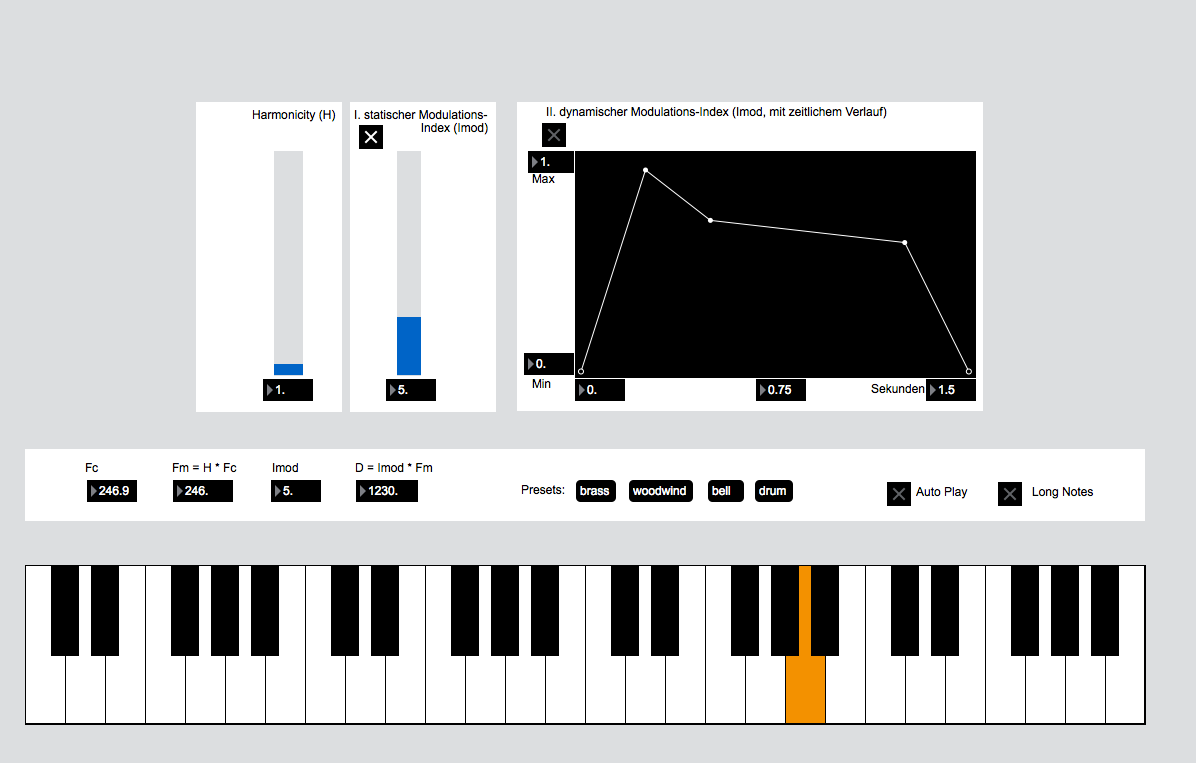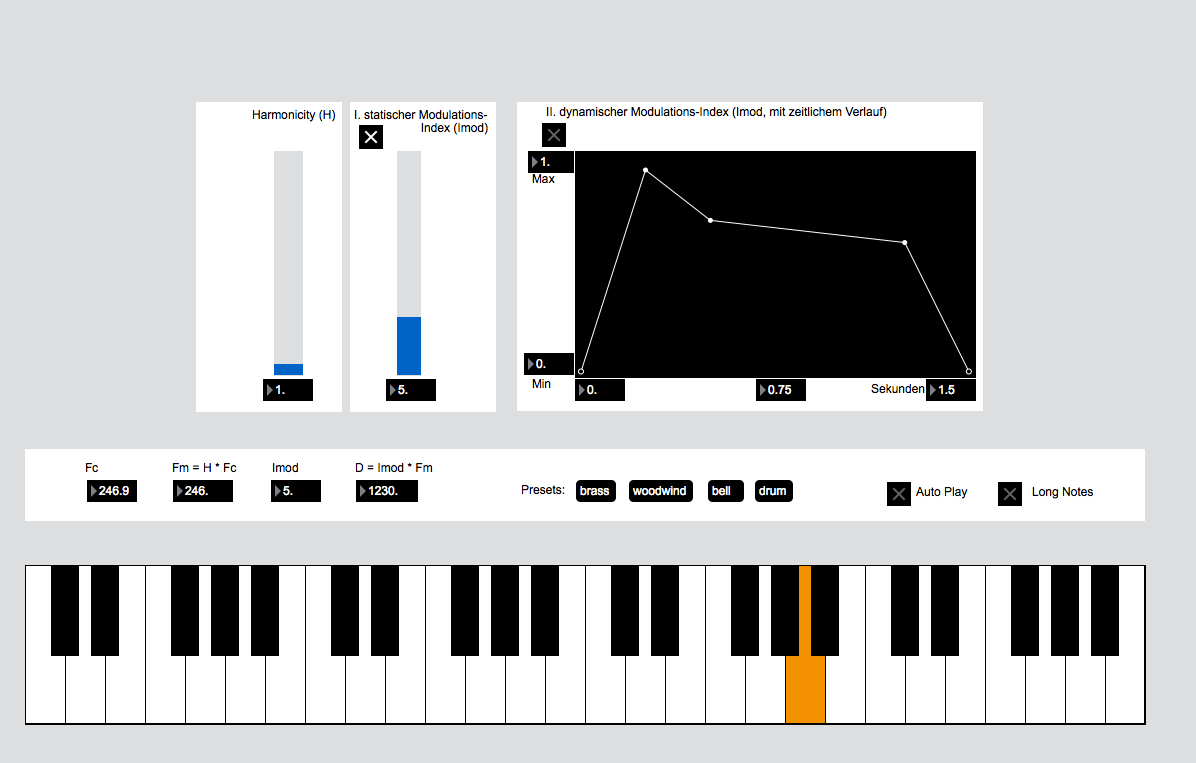FM_Synth
2017
- Title
- FM_Synth
- Year
- 2017
- Copy Number
- 029
- Medium / Material / Technic
- interactive installation, computer, monitor, mouse, headphones
The two interactive installations »Add_Synth« and »FM_Synth« enable visitors to get to know two classic sound synthesis methods.
The frequency modulation (FM) method was developed for radio technology. Through it, audio signals such as language and music can be transmitted wirelessly via electromagnetic waves. In this process, the low-frequency audio signal (with frequencies up to a maximum of 20 KHz) is effectively imprinted onto a high-frequency electromagnetic wave (with a frequency of approx. 100,000 KHz). In Germany, FM is used for VHF radio.
In the 1970s, the American composer John Chowning discovered that FM could also be used for sound synthesis. He developed FM synthesis, which was used by the Yamaha company in commercial synthesizers. Unlike radio transmission, FM synthesis works without a high-frequency signal, instead using two low-frequency signals. The major advantage that FM synthesis holds over additive synthesis (see »Add_Synth«) is how economical it is: complex tones can be created with just two modulators. Visitors to the »FM_Synth« installation can try this out for themselves.
Production of the ZKM_Hertz-Lab

